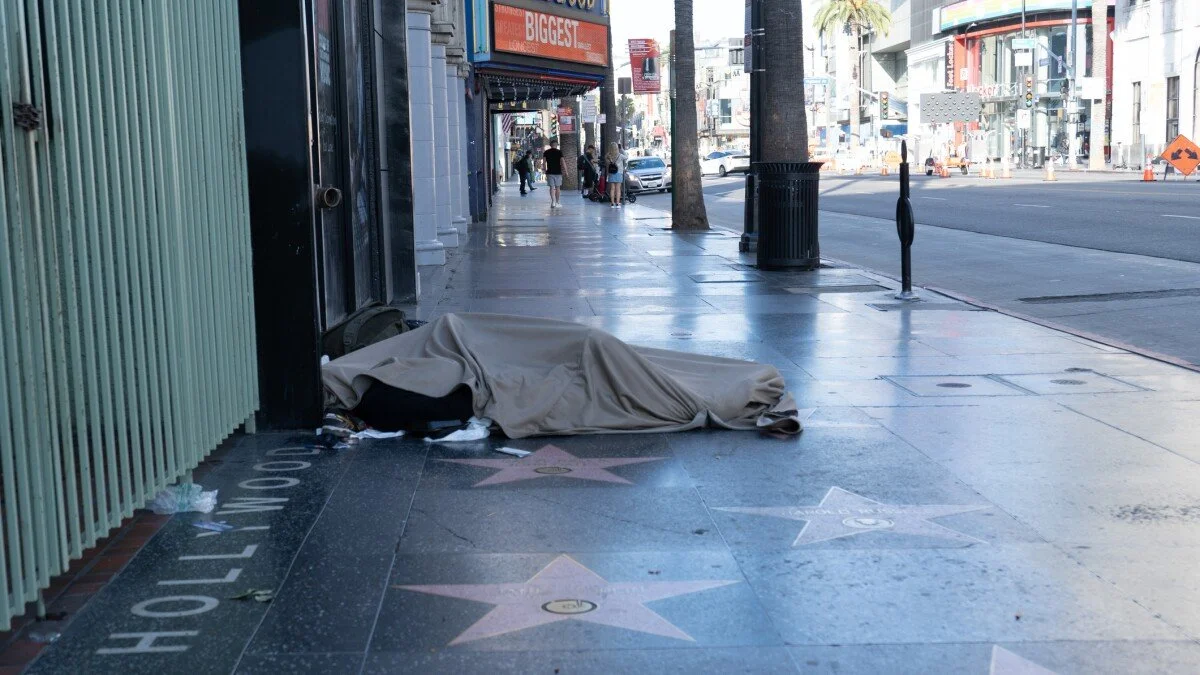Common Misconceptions of Homelessness
Driving through the outskirts of the Hollywood Walk of Fame, I peer through the car’s backseat window. Along the concrete sidewalks were numerous homeless encampments, tightly compacted together with tens of unhoused individuals lining the street. As a child, I was often told a blanket statement that homelessness is a result of one’s own reckless choices. In hand with that, many individuals regard the unhoused population as dangerous—a forgotten community hidden away from the rest of society.
Overpoweringly, people often have the notion that homelessness is labeled as something that does not happen “in my backyard” or the NIMBY ideology. Applied to the homelessness crisis, the ideology “not in my backyard” also commonly known as “beggar-thy-neighbor,” perpetuates the misconception that individuals experiencing homelessness only belong in the underserved and economically challenged areas of a city. This viewpoint, an ignorant view of reality, disregards the fact that avoidance of the homelessness crisis worsens the situation. NIMBY is often rooted in concerns about property values, safety, or social environment and dynamics. Many supporters of “not in my backyard” prevent the construction and development of shelters and affordable housing in their immediate vicinity. In The Daily Economy, the concerns of many NIMBYers “show stronger opposition to new construction, even when that new construction would benefit them according to their own beliefs” so they aim to “[maintain] the status quo” which clearly intensifies the housing crisis. Furthermore, these individuals “worry that new housing developments in their communities threaten their way of life,” such as their prediction that the influx of people from different backgrounds could potentially shift the demographic distribution of the schools NIMBYers’ kids attend. The ironic phrase of “not in my backyard” raises the question: if not in your backyard, then where?
The basis of arguments against programs to alleviate homelessness and the wider development of transitional housing often is a result of the misconception that homelessness is primarily caused by drug addiction and mental illness. However, the reality of the situation of most unhoused people is just an economic one: racial inequality in employment, skyrocketing housing prices, and the difficulty in attaining government aid often impact the ability to afford housing. For instance, there is on average at least 100% growth in California home prices in the past 10 years. Among the homeless individuals sheltered and in the labor force, there is approximately 15% unemployed, which could be potentially due to the economic changes and fluctuation of shelter resources.
While homelessness can make people more susceptible to addiction and mental illness, which can catalyze a seemingly inescapable cycle of poverty, it is often not the sole cause. Interestingly, what underlies unhoused individual’s involvement in drug addiction is often the dehumanization of the population. The public would much rather ignore the humanity of unhoused people and present them as people without complex emotions and stories. Labeling them as drug addicts and dangerous people eliminates any empathy for them and creates the narrative that they do not deserve respect and humane treatment.
Interconnected with the dehumanization of homeless people, many people falsely believe that unhoused people do not maximize the utility of their resources. However, when given direct financial support, most people spend money on housing and food. Every night, hundreds to thousands of people wait in line to get into a shelter and can't. A survey done in Los Angeles indicates that when these unhoused individuals are given the option of a congregate shelter, 30% of those on the street would say yes. Additionally, pilot programs show a high success rate when people are trusted with these resources.
As the media and public perpetuate harmful misconceptions and stereotypes about homelessness, the best anyone can do is to educate themselves and check their biases.
